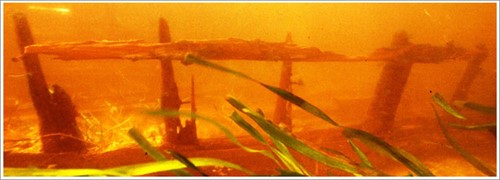Wrecked or Abandoned Vessels

As a crossroads of the Americas, Florida has the oldest maritime heritage in the nation. With a long coastline and numerous rivers, streams, and lakes, transportation and recreation by water has always been, and will continue to be, an important part of what Florida is all about. With its reefs, sandbanks, and periodic storms, our environment often represents a natural trap for watercraft - but at the same time, it also helps to preserve their remains.
The condition of sunken vessels varies, depending on their age and environment. Florida has a wide range of sites from intact wooden vessels abandoned in freshwater bayous to scattered and encrusted wreckage with little or no hull remains. Among the oldest are the more than one hundred dugout canoes that have been found preserved in Florida's wet environments, some of which are among the earliest discovered in the Western Hemisphere. At least five European nations left behind the remains of colonial warships and merchantmen that reflect the changing history of Florida before statehood in 1845. There are wrecks of ships that once transported slaves from Africa, that hauled bricks to build the great coastal forts, that carried lumber from pine forests, and that fished the snapper banks of the Gulf of Mexico. Each has a unique story to add to our knowledge of Florida's history. Today, modern ships are sunk on purpose to form artificial reefs. Years from now, diving archaeologists will study the ways in which they have disintegrated and become part of the environment.
The treasure of shipwrecks is their unique potential to reconstruct the past; they are time capsules left by the people who designed, built, loaded, and sailed the vessels. They tell us about the cultures and technologies of long ago. Shipwrecks are important to archaeologists because they are the results of sudden cataclysmic events. Little floating worlds, in which nearly everything onboard is the same age and was in use at the same time, suddenly were deposited on the seafloor and fell into a crack in time. Unlike many land sites that were occupied and reoccupied over time, shipwrecks existed at once, isolated in time and space, providing what archaeologists call a "closed context" view of the past.

